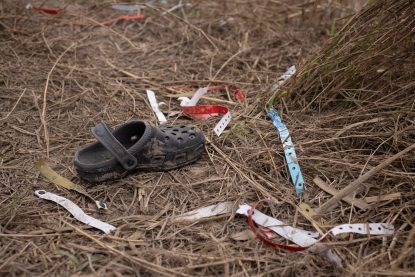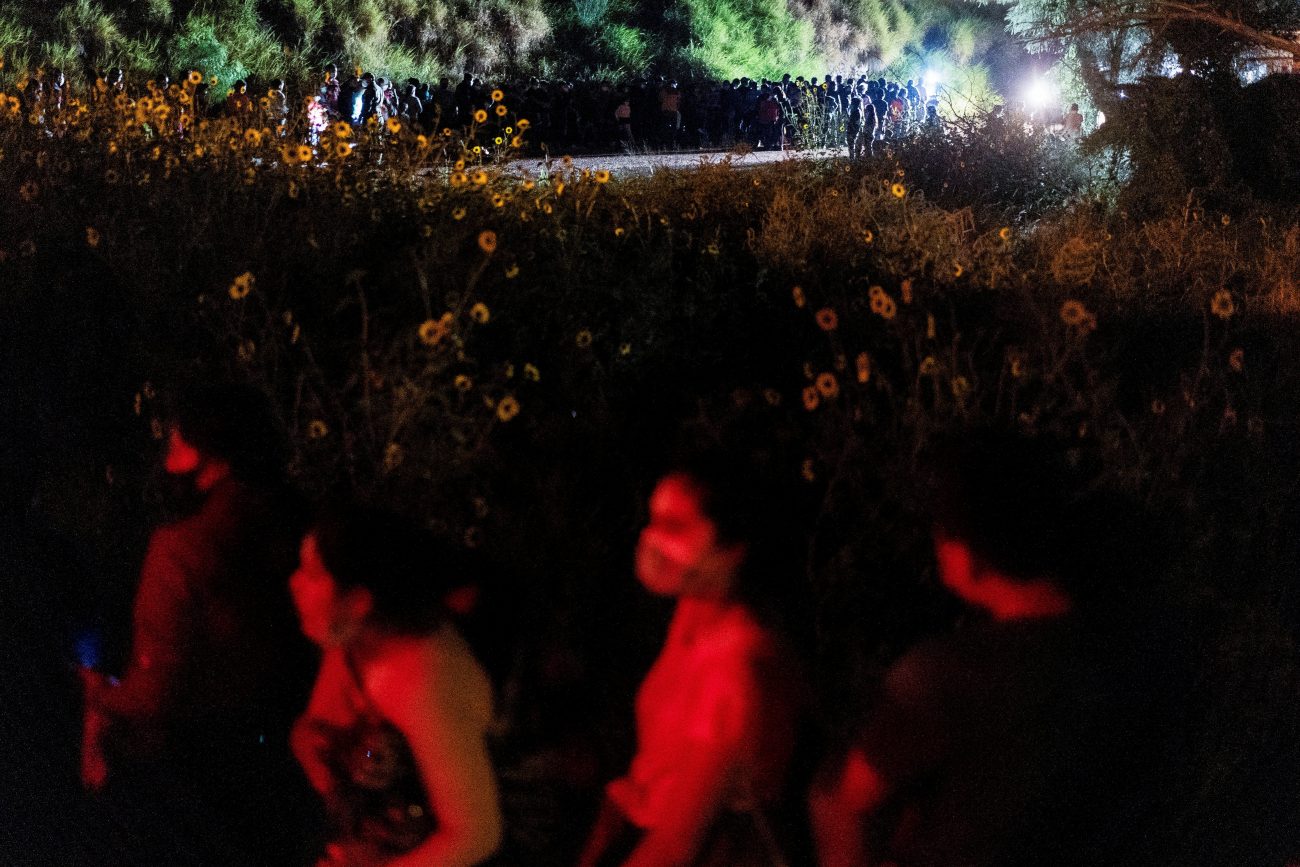The summer began with Vice President Kamala Harris’ unwelcoming words to Central Americans in a speech in Guatemala: “Do not come.”
But it’s clear that few heeded her June 7 message seeking to dissuade Central Americans and others from heading, in record numbers, to the U.S.-Mexico border — even during the hottest months of the year.
In an Aug. 12 trip to McAllen and Brownsville in Texas, U.S. Department of Homeland Security Secretary Alejandro Mayorkas conceded that an “unprecedented” situation is taking place at the border, calling it “one of the toughest challenges we face.” One “made more acute, more difficult,” he said, “because of the COVID-19 pandemic.”
[hotblock]
In July, U.S. Customs and Border Protection encountered close to 213,000 people attempting entry along the border. Among them were unaccompanied minor migrants, single men and women, and families — all who have added to figures that will, at the very least, rival records set for border apprehensions when the fiscal year ends Sept. 30.
The previous record set in 2000 was 1.7 million. By the end of June 2021, 1.1 million encounters had been recorded by immigration authorities with three months to go.
“There are several reasons for the rise in migrant encounters at the Southern border,” Mayorkas said, adding that the numbers don’t tell the full story because many of the migrants tallied in those figures had previously tried to enter.
But there are other factors at play.
“Worsening conditions, of course, in the countries of origin, including poverty, a rise in violence, and corruption,” he explained.

A shoe is seen surrounded by wristbands discarded by Central American migrants in Penitas, Texas, March 8, 2021, along the banks of the Rio Grande. (CNS photo/Adrees Latif, Reuters)
He also took a shot at the Trump administration, saying it had “slashed” economic aid that had alleviated some of the situations that made people leave the so-called “Northern Triangle” region — Guatemala, El Salvador and Honduras. Trump also had dismantled immigration laws that had provided some legal paths of entry, he said.
Some Republicans, however, have been blaming the current administration’s “open-border” policy for the rise in numbers, saying that announcing a halt on deportations in Biden’s first 100 days in office and stopping construction of the border wall was almost like a siren call, urging people from Central America to come in.
Others, like The Washington Post, also have blamed the Biden administration but for a different reason.
In an Aug. 8 opinion piece, the newspaper’s editorial board said the administration’s “convoluted messaging — telling migrants not to seek entry to the United States while at the same time relaxing or scrapping an array of measures that would actually dissuade them and providing relief to migrants on both sides of the border — has been a failure.”
Others have noted the mixed signals. While it’s true that Biden initially announced a temporary halt on most deportations, except for those who had committed felonies, on July 12 there was a change of tune. Officials said some immigrant families who entered the U.S. illegally and did not qualify for asylum would be subject to “expedited removal” proceedings, or fast-tracking deportations.
[tower]
It raised the ire of immigration advocates who had considered the administration an ally.
Administration officials also had signaled to immigrant advocates that they would be partially lifting — for minors and families only — a public health policy used to expel migrants by the end of July. But the month came and went and in August, officials announced it would be kept in place, except for minors, to keep COVID-19 and its emerging variants from entering into the U.S.
Mayorkas also announced during the border visit “expulsion flights” that would send individuals and families who do not qualify to stay in the U.S. into the interior of Mexico, as a way to make it more difficult for them to reenter the U.S. The government of Mexico is cooperating with the measure, he said.
“It appears that Biden and Harris are leaning on a failed model of deterrence rather than facilitating immigration and asylum-seeking,” said the El Paso, Texas-based Hope Border Institute, a nonprofit that works with migrants at the border, in an Aug. 2 newsletter.
On the ground in Central America, smugglers, known as “coyotes,” still are making the pitch that those who are deported are the exception, not the norm. Families on the migration journey regularly announce to the communities they left behind, via Facebook or WhatsApp, that they have reached their final destination safely. Catholic churches in the region also regularly announce Mass intentions on behalf of families giving thanks for their loved ones’ safe arrival to the U.S.
Critics point to August video footage of thousands of border crossers gathered underneath an international bridge near McAllen, Texas, as proof that, no matter what the Biden administration says, Central Americans aren’t listening and not all is under control.
“We have seen surges in migration before,” said Mayorkas. “We’ve seen them in the past, and migrations surges are not new.”
President Donald Trump, too, experienced surges at the border and infamously tried to deter them. In late 2018, authorities fired tear gas as migrants attempted to cross.
But the pandemic, which thrives in mass settings, has added a political hue to the immigration issue.
Republican politicians in Texas and Florida have blamed immigration for rising COVID-19 cases in their states.
Texas Gov. Greg Abbott, in an executive order, attempted to halt transportation of migrants by anyone other than local or federal authorities, saying they were spreading the virus.
The order was issued after authorities came across a migrant family, being aided by a local Catholic Charities agency, at a burger shop even though they were supposed to be in quarantine at a La Joya, Texas hotel paid for by the nonprofit. The family had tested positive for COVID-19.
The city of McAllen, which has been ground zero in the immigration debate, said in an early August news release that CPB had released “over 7,000 confirmed COVID-19 positive immigrants” into the community since February 2021, including “over 1,500 new cases in the past seven days.”
In Florida, Republican Gov. Ron DeSantis also blamed Biden’s immigration policy for the surge in that state, saying Aug. 4 that “no elected official is doing more to enable the transmission of COVID in America than Joe Biden with his open borders policies.”
Immigrant advocates shot back, saying politicians’ bad management of the pandemic is what has led to rising infections, not the influx of migrants. But in some circles, the two crises are being intertwined.
“It is deeply disturbing to watch Governors Abbott and DeSantis play politics with the plight of vulnerable men, women and children who need safety — and the individuals and organizations who help them with food, shelter, clothing and legal aid,” said Anna Gallagher, executive director of the Catholic Legal Immigration Network.
“Both the sojourners and the helpers are human beings, with inherent dignity, made in the image of God,” she said. “I pray for the people in Texas, Florida and around the world who have contracted COVID or are in danger of contracting it in the future.
“I pray for leaders to be honest with their constituents and confront COVID instead of scapegoating those in need of our solidarity and support.”
PREVIOUS: Justice Department drops case of conscience on abortion
NEXT: Gangs, economy in crisis complicate Haiti disaster efforts




Share this story